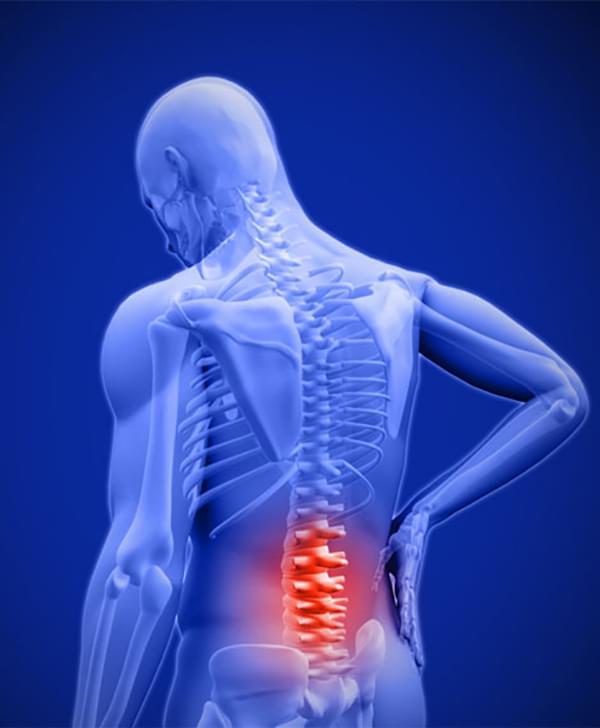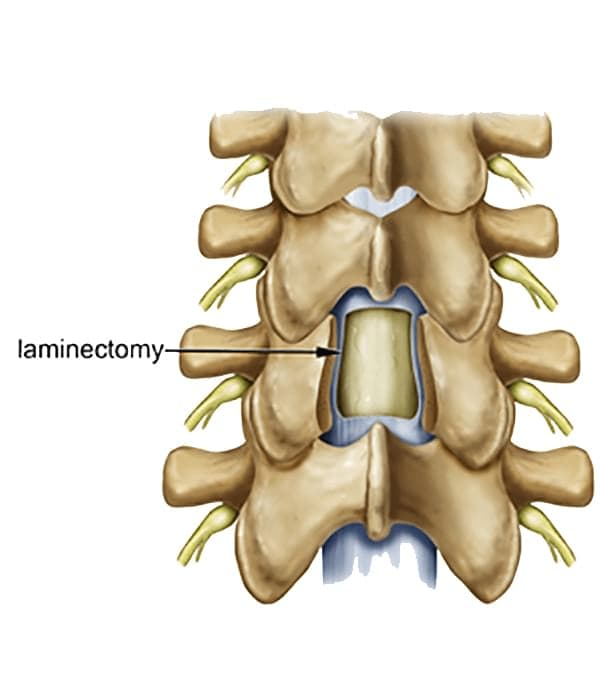Lumbar Hemilaminectomy
Tyler Neurosurgical Associates offers comprehensive diagnosis and expert surgical technique for those needing a lumbar hemilaminectomy
Who should have a hemilaminectomy?
The most common reason to have this procedure is due to severe Sciatica, numbness or weakness in the leg. Most likely if symptoms are not too severe other things will be tried first, such as physical therapy, rest, and anti-inflammatory medications.
What symptoms should I look for?
The cause of your symptoms, in the majority of cases, is a degenerative process in the Lumbar region of the spine whereby the Facet Joints enlarge, the ligament becomes thicker, and the disk bulges. When this happens, it reduces the space and compresses the nerves that supply sensation to the legs.


What you should know before undergoing lumbar pain surgery
In the operating room, you will be given a general anesthetic and then positioned face down on a special frame. An incision is drawn on with a special pen and the area is cleansed with an antiseptic solution. You are then covered in drapes so that only the incision area is exposed. An incision is then made through the skin and down to the spinous process. The muscle is moved away from the Lamina and Facet Joint and a retractor is used to hold it out of the way. The level is checked by Xray and the operating microscope is brought in. Using a special bone drill, part of the Lamina and the Facet Joint may be removed. This leaves the ligament which is removed in order to expose the dura and the compressed nerves. The procedure may be needed on more than one nerve. It can also be done bilaterally leaving the spinous process intact.
Special attention is given to the nerves to make sure the nerve is completely decompressed. The openings under the Facet Joints that the nerve runs through are checked and decompressed if necessary. Once this has been completed and all bleeding stopped, the layers are then stitched back together in their normal positions. The skin is then closed with either dissolvable sutures or staples.
Hemilaminectomy Recovery Process
You will wake up in the recovery room and after about 1 hour you will be moved to your room. The nurses will be continually checking your vital signs and leg strength monitoring for any signs of complications. During the first night, the nurse will wake you for these observations. You will be given injections for pain which will be discussed before surgery. Sometimes you will have difficulty urinating and will require a catheter. You will be encouraged to get up and walk a little. The next day the IV in your arm will be removed after your next walk and then you will be given oral analgesia. You could go home on this day, or the next depending on your comfort level.
Things to do to speed up recovery
It is important after the surgery to walk as much as possible. Prolonged rest in bed can produce hip pain and blood clots in the legs. Sometimes a couple of days after the surgery the discomfort in the legs may return. This is caused by swelling and will usually settle down with NSAIDs. If you have removable sutures they will be removed 7 to 10 days post-operatively.

What to watch for during recovery
You will be admitted either on the day of surgery or the previous night. You will be NPO from midnight on the day of surgery. You will be discharged 1 to 2 days post-operatively. On discharge, you will be able to shower and dress. Post-operatively, if you experience any of the following you should notify your doctor immediately:
- Weakness in the legs
- Difficulty in urination
- Abdominal pain
- Increasing leg pain or numbness
- Fever
- Increasing back pain
- Swelling or infection in the incision

What you can do during the recovery process
When you go home, you will be able to do most things. You should avoid any heavy lifting, twisting, or prolonged sitting. You will also not be able to drive for 3 to 6 weeks post-operatively. You will able to return to work in some cases between 4 to 6 weeks. It is very important to walk as much as is comfortable. The most common risk are:
- Infection which will be treated with antibiotics
- Damaging the nerves that are compressed
- Damage to the dural sac containing the nerves and producing a fluid leak (this will stop with bed rest)
- Post-operative blood clot requiring drainage
- Paraplegia with or without bladder/bowel function (This is very rare)
- Clot in the legs (This can travel to the lungs, although it is uncommon)
Complications related to a lumbar hemilaminectomy
- Pneumonia
- Heart Attack
- Kidney/bladder infection
It depends on the reason for the procedure, but in general, weakness and pain should improve, but the numbness may not. You have a bad back and it is not likely you will be back to 100%. Most people do have ongoing back discomfort and this will vary from case to case, but may improve with anti-inflammatory medication.


